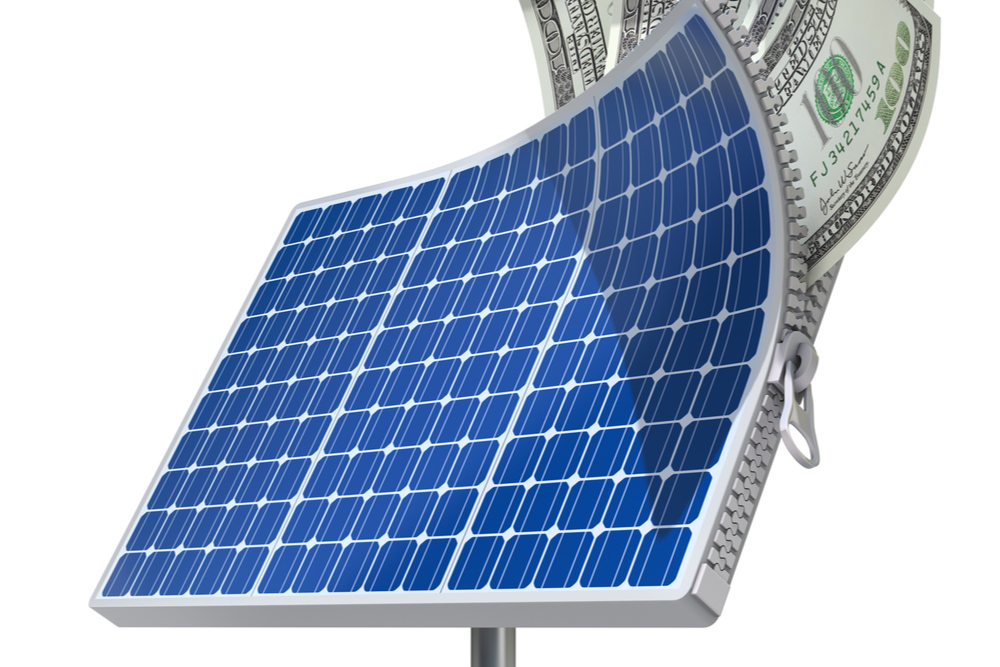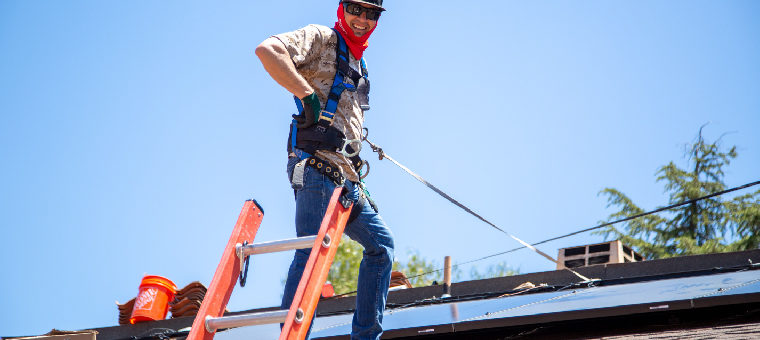Originally published September 13th, 2018. Updated on January 6th, 2021.
Over the past decade, homeowners interested in solar power for their home enjoyed a sunny surprise. A combination of strong renewable energy incentives on the federal and local level, as well as improving technology and growing manufacturing efficiencies has led to a continual drop in the cost of solar. In fact, if you purchase solar panels today you may pay up to 60% less than your neighbors who purchased the same sized solar power system ten years ago!
With this information in mind, it might seem like a smart move to wait to purchase solar panels until the price drops even further. Unfortunately, some big political changes are creating a lot of volatility in the market, which may steadily bump up the price of solar panels. Now could actually be the very best time to purchase solar panels before prices continue to climb. Let’s look at some of the big changes that are happening in the solar world and how future changes could affect the price of solar power for your home even more!

The United States Announces Solar Tariffs
One of the Trump Administration’s favorite weapons is the tariff, which acts as a tax on imports of materials and goods from other countries. The Administration has been serious about instituting protectionist trade policies.
Over the past year, President Trump has announced tariffs on over $200 billion in goods, including tariffs on steel, aluminum, washing machines, flat screen televisions, medical devices, and even airplane parts. One of the very first tariffs the president announced was a 30% tariff on all solar imports into the United States, which includes solar cells and solar modules. Semper Solaris offers you the freedom to choose American-made solar panels.
This tariff has already had a major impact on the solar industry. According to Popular Science, roughly 80% of solar installations in the United States use imported solar panels, mostly from Malaysia, South Korea, China, Thailand, and Vietnam. When the price increases on these panels, solar manufacturers and installers tend to pass these costs onto consumers.
Solar customers are already starting to feel the pain of this tariff. According to an investigation by Reuters, U.S. companies have canceled or frozen roughly $2.5 billion in large solar installation projects.
What do the solar tariffs mean for you as a homeowner? While larger solar utilities will feel the brunt of the solar tariffs, individual homeowners won’t be left unscathed. Analysts are already predicting that the tariffs will lead to a shortage of solar panels, which will hike prices. A Bloomberg New Energy report predicted that solar utilities could see a 10% increase in the cost of solar, while homeowners may face a 3% cost increase for residential solar projects.
Here at Semper Solaris, we strive to use American-made solar parts. While American-made solar equipment won’t be directly affected by the tariffs, our costs could also go up as other installers switch to American-made equipment. As competition for American-made solar panels goes up, so will prices!
The Solar Investment Tax Credit Is Slated to End in 2022
Over the past decade, the solar sector has grown an average of 68% each year. One of the biggest drivers of this explosive growth was the creation of the Solar Investment Tax Credit (ITC) in 2006. The ITC allows homeowners and commercial businesses to deduct 26% of the total cost of their solar installation from their taxes. This deduction can even be rolled over to the next year if the deduction is greater than your total tax bill. In essence, the ITC is a 26% discount on the cost of solar. That often results in thousands of dollars of savings for individual homeowners who invest in solar.
The ITC is a powerful incentive, which makes solar much more affordable for individual homeowners as well as commercial interests that invest millions to create massive solar farms. In many ways, the ITC has been instrumental in speeding up the transition in the United States from fossil fuels to clean, renewable energy. However, all good things much eventually come to an end.
The ITC was created to help make solar more competitive as it got established in the United States. It was originally slated to expire in 2007, but the program has been working so well that Congress has extended the expiration date several times.
The ITC began diminishing in 2020. In 2019, the tax deduction remained at 30%, but if you were to invest in solar power for your home in 2020, the deduction was lower to 26% and then to 22% in 2021. In 2022, the ITC will expire completely for homeowners.
Homeowners should prepare for the worst and assume that the ITC will not be extended past 2022.
Local Renewable Energy Incentives Are Going Away
The federal government isn’t the only one who wants to help make solar more affordable. All across the country and especially in California, local cities and municipalities have poured money into programs that provide tax incentives and rebates to homeowners who go solar. However, there is a limit to how much these local entities can payout. In many instances, once the initial investment is used up, it’s gone for good.
This is exactly what happened for customers of three major California utility customers – Pacific Gas & Electric (PG&E), Southern California Edison (SCE), and San Diego Gas & Electric (SDG&E). Through the California Solar Initiative, each of these utilities was given a fund which they used to provide rebates for commercial and residential solar customers. Solar became so popular in the Golden State, that all three utilities used up their funds, putting an end to the rebates.
Fortunately, not all local rebates programs have given up the ghost. Customers of the state’s largest utility, the Los Angeles Department of Water and Power (LADWP) still has an active incentive program, which provides a rebate of $0.25 per watt for new solar projects. Rebates may also still be available for residents of Glendale, Pasadena, and San Francisco. However, there’s no telling how long these programs will continue.
Local rebates and other solar incentives can save homeowners hundreds or even thousands of dollars off the cost of their solar projects, but they are disappearing fast. If you are fortunate to qualify for a local program, there’s no time to lose. Start searching for local California solar installers in your area right away so you can take advantage of these incentives before they are gone. Otherwise, you’ll be paying even more for solar power for your home when the local government could have picked up the tab!

Don’t Try to Time the Market to Get Solar Power for Your Home
Many financial gurus like to tell their followers, “never try to time the stock market.” You may wait so long for the perfect conditions to either buy or sell stocks that you’ll miss valuable growth opportunities and end up financially worse off than if you’d just invested steadily each month.
The stock market is incredibly difficult to predict, and even expert mutual fund managers rarely outperform the indexes. The solar market isn’t much clearer. While the price of solar panels has steadily dropped over the last decade, that trend may not last much longer. With the Trump Administration’s hefty solar tariffs coming on top of the expiration of helpful federal and local solar incentives, the price of solar panels is likely to rise in the near future.
Will prices continue to go up, or will they drop back down as solar technology and manufacturing efficiencies improve? What happens if a future administration eliminates the solar tariff or Congress decides to extend the ITC?
All of these things are impossible to predict, which means trying to wait for the perfect time to purchase solar panels may be as futile as trying to predict the stock market. That’s why now is the perfect time to invest in solar. While we can’t tell you for sure that solar prices will continue to rise, but we can tell you with absolute accuracy that you will begin saving money the moment your solar system comes online. The sooner you invest in solar panels for your home, the sooner you’ll begin saving on your monthly utility bill and the faster your solar panels will pay for themselves!
There’s no reason to wait. If you invest in solar this year or in 2019, you can still take advantage of the valuable ITC. Contact Semper Solaris today. We have local offices throughout California, and we would be glad to help you qualify for any available local solar rebates or tax incentives. Request a free, no-pressure energy analysis of your home right now!
